Imagine having a pharmacy open 24/7 in your backyard, supplying natural medicines free of cost, fuelled only by water and daylight. Yep, we’re talking about growing your own medicine—it’s the best thing you can do for your long-term health. Setting up your own backyard pharmacy to help with your day-to-day wellness is simpler than you may think.
You don’t have to be a gardening expect to grow medicinal trees for the wellbeing of you and your loved ones. In this article, we’ll go over everything you need to know to bring this potentially life-changing idea to life.
While the link between trees and medicine may sound random at first, there are countless medicinal trees everywhere. They’ve been used for centuries in treating certain health issues or concocting herbal remedies.
Nearly every part of a tree possesses some sort of healing benefits for us to leverage. For some trees, you may have to extract medicinal benefits from the wood, while others are naturally easier to obtain, such as seeds, flowers, tree leaves, or bark.
If you’re fairly new to the realm of medicinal tree foraging, it’s time to get into the basics. Let's look at some of the best herbal medicinal trees and how to use them.
1. Cedar
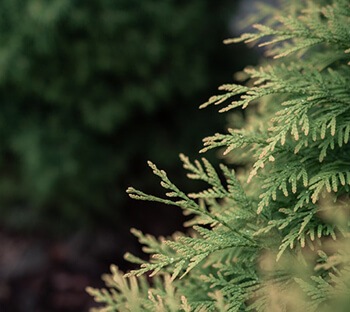
Experts believe that tea made out of cedar branches and twigs can fight all kinds of ailments, from fevers to arthritis and scurvy, owing to its rich vitamin C content. Moreover, cedar is especially good at resisting rot, further contributing to its medicinal potential.
Cedar leaves and branches were traditionally burned as incense as their distinct scent was thought to prepare peoples’ minds for prayer by harmonising their emotions.
Cedar tea is fairly easy to make: just add the branches and twigs to a pan containing water and simmer until the water turns brownish. The tea can help immediately with pains, colds, flu, or fevers.
2. Elm
Elm trees are known for their asymmetrically shaped, deep green leaves, and their distinct cracked bark. An elm tree’s inner bark is thought to have soothing properties with ‘mucilage’—a property that can help treat issues with the mucous membrane. Elm’s most common use is to soothe the digestive tract. Slippery elm is sold widely in all medical stores for various digestion or stomach issues as a herbal supplement.
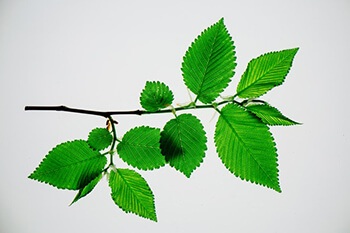
It’s quite easy to reap the medicinal benefits of your home-grown elm berries. Simply take dried or fresh elm berries as tea to nourish the blood and improve your lung health. You can also use them as an ingredient in salves, or add them to topical creams to help with common skin conditions. Elm bark tea is said to be effective in easing headaches and clearing congestion. Additionally, elm flowers also have tons of medicinal potential, especially against fevers, as they can be used in a tincture to stimulate sweat production.
3. Birch
Thanks to its unique papery bark, birch is one of the most easily identifiable trees—regardless of the season. Experts can’t say enough about the advantages of birch trees, and it’s all down to their antibacterial properties. They’ve been used as effective storage containers that naturally keep good stuff from going bad. The tree’s inner bark has also been used as a food source by Native North Americans for years.

Birch sap also has a wide range of medicinal benefits, with a folk reputation to help with everything from kidney issues and bladder stones, to soothing skin conditions and treating muscles pains and aches. Drinking birch sap directly is said to act as a cleansing and refreshing tonic for your system. Botulinic acid—a particular birch sap component—also has anti-tumour properties, which have shown to help fight cancer. As if that list wasn't long enough, fermented birch sap can also be used to make country beers, birch wine, and spirits.
For years, birch has been used as an effective treatment method for scurvy, kidney stones, and gout. It’s promoted as a particularly nutritional supplement for young children and newborn babies.
4. Apple
The apple doesn’t fall far from the tree—quite literally! You’ve probably heard plenty about the health miracles of eating an apple a day. Well, there’s plenty of medicinal value in an apple tree as well. The bark of the apple tree root can be useful in the treatment of fevers. You can also use it as a tonic to regulate general functions of the body.
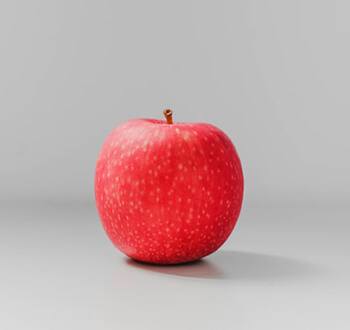
Even if the tree had no health benefits, it’d still be worth adding to your natural pharmacy just for the fruit. Apples deserve a high priority spot in your diet. They’re naturally loaded with dietary fibre, antioxidants, flavonoids—all essential elements to keep you disease-free.
Apples are rich in phytonutrients, which, according to experts, can significantly reduce the risks of developing heart disease, cancer, diabetes, and hypertension. Apples also reduce the stomach’s acidity and help cleanse your liver. Moreover, the topical use of apples also seems promising, as some people swear by apple cider washes for promoting clear skin.
5. Beech
Beech trees have fairly large leaves, with a unique, grey smooth bark. These leaves have strong antibacterial properties and have been used historically for tuberculosis treatment by native Americans. Along with tuberculosis, beech tree bark is also used as a common herbal lung remedy when taken in the form of tea.
Beech is said to have a cleansing effect on the blood, making it a fantastic wash for poison ivy. The beech tree’s leaves can also be used as a viable burn treatment due to their antibacterial properties. If you’d like to try something new, you should definitely add beech leaf tea to your list.
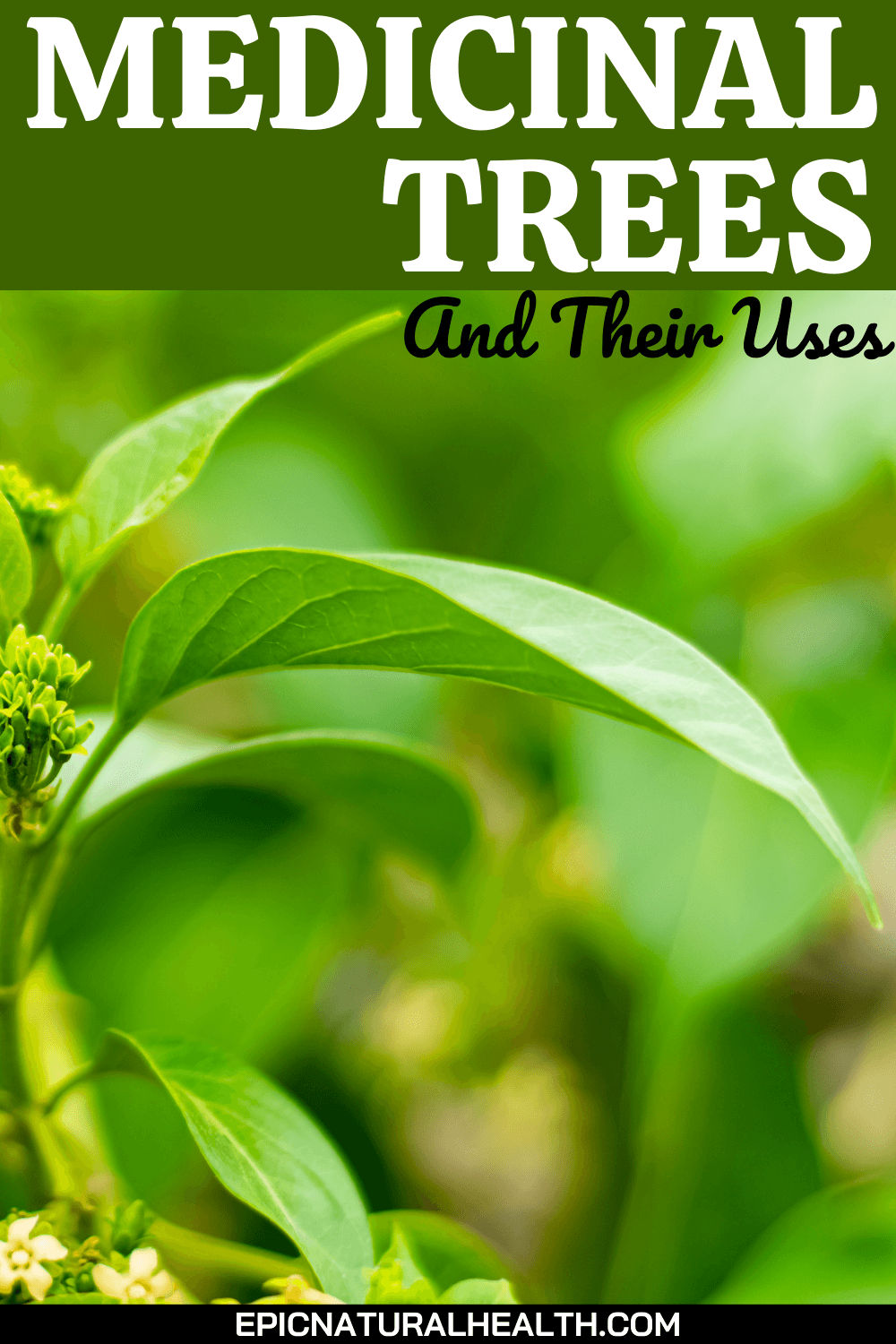
6. Hazel
Hazel trees are smaller in size and easily recognizable due to their tiny round-shaped nuts, growing in clusters of two to four. If you love Nutella, hazel trees are to thank partly, as hazelnuts constitute 13% of its ingredients. Hazelnuts are loaded with healthy fats, and according to research, they can be incredibly useful in maintaining good kidney function and heart health.
Aside from their nuts, the bark from hazel trees is also useful for creating salves for ulcers and tumours. Hazel bark is particularly good at promoting coagularion (or clotting) of the blood, making it incredibly helpful in treating and healing wounds.
- Rose, Lisa M. (Author)
- English (Publication Language)
- 312 Pages - 06/28/2017 (Publication Date) - Timber Press (Publisher)
- Medicinal Plants: East And Centr 3
- Foster, Steven (Author)
- English (Publication Language)
- 480 Pages - 04/08/2014 (Publication Date) - Mariner Books (Publisher)
- Carroll, Judson (Author)
- English (Publication Language)
- 366 Pages - 06/30/2021 (Publication Date) - smashwords (Publisher)
- Package Quantity: 1
- Excellent Quality.
- Great Gift Idea.
- Satisfaction Ensured.
7. Ash
Ash is a fine-toothed tall tree that’s identifiable by its smooth-edged leaves and greyish brown twigs. Ash seeds are paddle-shaped and grow in the form of clusters. The leaves and twigs from the tree have been used for years as laxative tea ingredients, and can also help with joint pain, gout, and jaundice.
Ash leaves are saig to be good at reducing cellulite and helping keep your skin supple, all thanks to their natural diuretic properties! The ash tree’s bark can help with constipation, bladder issues, fever, and fluid retention.
8. Maple
Best known for maple syrup, maples come from large trees with toothed leaves. The sap that comes from the tree can be drunk on its own, though it’s not as tasty as maple syrup.

Asian herbalists have been drinking maple sap traditionally for years, seeing it as a bone-strengthening tonic – and it’s certainly enriched with all sorts of minerals to do the job! Maple sap has shown to ease hangover symptoms, lower blood pressure, support a healthy immune response and reduce ulcer formation. To help soothe muscles, young maple leaves can also be made into massage oil.
9. Hawthorn
While hawthorn trees are relatively small, the flowers and berries that they produced have been found to boast a whole host of cardiac benefits. For years, hawthorn berries and flowers have been an essential part of traditional herbal medicine to help lower and regulate blood pressure, as well as strengthen the heart. However, eating too much of these berries can cause your blood pressure to drop to undesirable levels.
Health benefits aside, you can make great use of hawthorn berries by making a delicious sweet syrup out of them. Simply cook some berries with honey or sugar, wait for them to release their flavourful juices, and finally, strain out the berries—voila!
10. Oak
Oak trees are easily spotted due to their identifiable acorns drooped in bowl-shaped caps. The broad leaves and bark of an oak tree naturally contain tannins, compounds that help with strengthening blood vessels and disinfecting wounds.
Oak bark tea is useful for treating chronic haemorrhoids and diarrhoea. It can also show immediate results when used as a gargle for sore throat. Moreover, cooled oak tea can be applied topically to your skin to treat problems like scratches, burns, cuts, or poison ivy. Oak bark tea is fairly simple to make—simply add about two tablespoons of bark into a cup of warm water, then wait to cool before drinking.
11. Pine

You may associate pine trees with Christmas decorations, but of course, they exist all year round as key natural healing agents.
Pine trees have excellent antiseptic properties that make them the perfect go-to for a natural wound wash. If you want to have pine in tea form, the tastiest option is white pine. For a vitamin C-rich cup of tea, simply simmer some pine needles. This tea is said to help significantly with coughs, colds, and sore throats.
If you enjoy trying new things, you could also go for a pine bath to soothe sore muscles, improve circulation, and correct kidney issues. Pine’s aroma is thought to have a soothing effect on the mind, so adding it to your bath can be a great idea after a stressful day.
12. Walnut
Walnut trees are great to have as part of your natural medicine growing ventures. They’re tall, aesthetically pleasing trees featuring spring flowers that eventually mature into nuts called—you guessed it—walnuts. Their husks have anti-fungal properties, and they’re filled with skin-healing agents such as manganese.
Walnut hull tea is believed to help improve your digestion, circulation, and energy levels. You can also apply fresh walnut tree bark onto your temples for an immediate headache remedy.
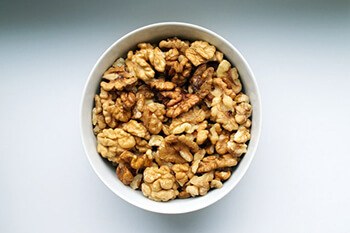
Conclusion
There’s clearly lots of value hidden in growing medicinal trees around the house. They can dramatically improve your long-term wellbeing and offer quick solutions to everyday issues, working as over-the-counter medicines with no cost or side effects.
If it sounds like too much work to grow and take care of medicinal trees, you can still make the most out of the nature around you. Your local woodlands probably have most of the trees discussed in this article, and heading out on the occasional foraging session can be a fun, healthy activity.
Provided you’re not visiting a protected or private area, you’re more than welcome to take twigs and leaves from medicinal trees. Just avoid taking away too much bark from trees, as that could open the trunk up to decay and disease.
As medicinal trees grow year-round, developing a skill to easily identify them and understand their uses can be incredibly valuable from a health perspective. You can make your own natural medicine using different parts of these trees—there’s lots of potential to get inventive.





